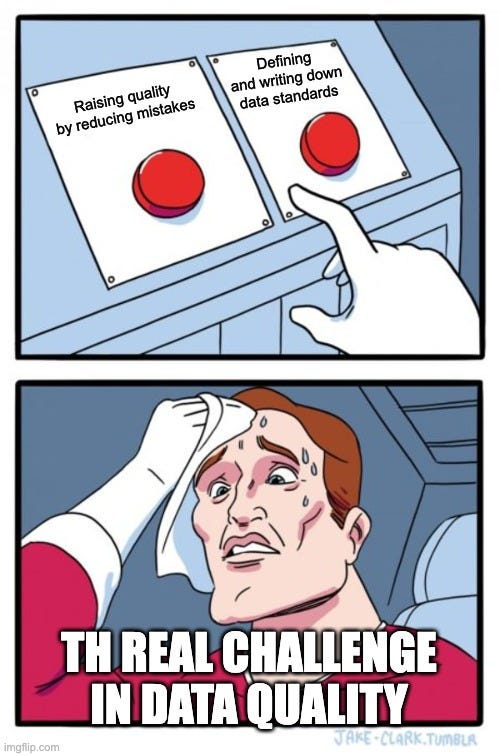Transparency > correctness in data quality
Ask ten people what they understand by “data quality,” and you get 20 different definitions.
That’s because the word quality in itself is misunderstood.
Quality literally means “to meet a predefined standard.” A Toyota car is higher quality than a Rolls-Royce because it meets the defined standard of 99.999%.
The true question in the field of data quality isn’t how to make fewer mistakes; it is how to capture and define the standards.
Is it ok if your sales transaction data is negative? Yes, if they include cancellations. It depends on the standard!
The challenge we need to solve with data quality isn’t about raising the quality; it is about defining the standards and checking our data against them.
By prioritizing transparency over correctness, you create a culture around understanding what is good data and what is not. You don’t create a culture of blindly following a set of vaguely defined rules.




